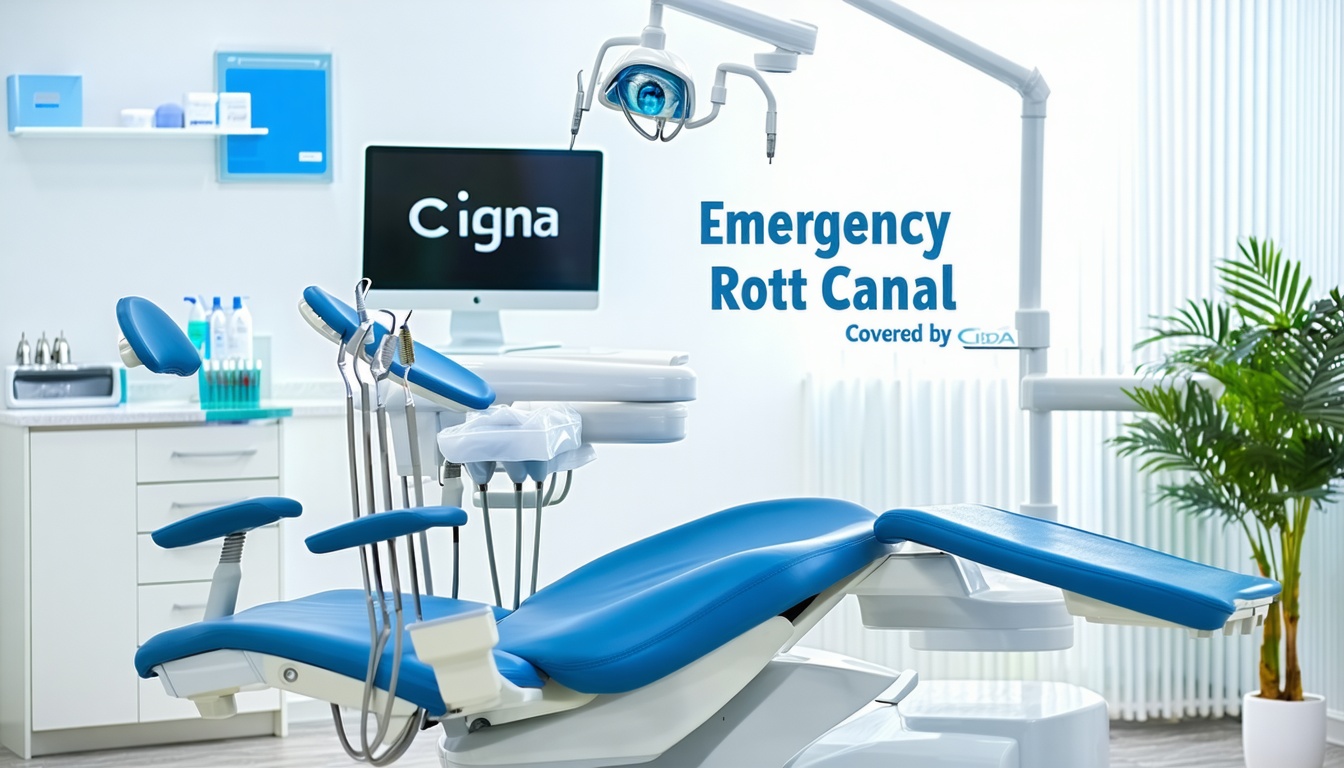
If you’re facing sudden, severe tooth pain and wondering whether an emergency root canal covered by Cigna can ease your out-of-pocket burden, you’ve come to the right place. This guide walks you through how Cigna dental plans handle urgent endodontic treatment, what costs you may incur, and how to navigate the claims process for a smoother experience. Whether you’re a working adult in Charlotte juggling a hectic schedule or a parent seeking relief for an injured child, understanding your coverage can help you focus on what matters most—getting prompt care and lasting pain relief.
Read on to learn how to determine coverage under your Cigna DHMO or PPO plan, estimate your share of costs, find an in-network emergency dentist, and submit accurate documentation for reimbursement. With clear steps and real-world examples, you’ll be ready to take action as soon as you need it.
An emergency root canal is an expedited endodontic procedure designed to relieve acute pain and stop the spread of infection in a damaged or inflamed tooth pulp. During the treatment, your dentist or endodontist will:
As a result, you can avoid more invasive interventions, such as extraction or surgery, and preserve your natural tooth.
Knowing when to seek an emergency root canal can prevent complications. Watch for:
If you experience any of these symptoms, call your dentist immediately. Delaying care can lead to increased pain, spreading infection or tooth loss.
When you review your Cigna coverage, you’ll most likely have a choice between a Dental Health Maintenance Organization (DHMO) plan and a Preferred Provider Organization (PPO) plan. Each option has distinct features:
| Feature | DHMO | PPO |
|---|---|---|
| Provider network | Requires in-network dentists | Offers in-network and out-of-network access |
| Deductible | None | Typically \$50–\$100 per person per year |
| Annual maximum | None | Usually \$1,000–\$2,000 per person |
| Claim forms | No claim forms required | Required for out-of-network services |
| Waiting periods | No waiting periods for covered services | May apply for major procedures |
| Cost sharing | Fixed copayments for covered services | Coinsurance model (e.g., 50–80% coverage levels) |
For example, Cigna Dental Care DHMO plans include no deductibles, no annual dollar maximums, no claim forms and no waiting periods for covered services (Cigna). This predictable structure can be ideal when you need a same-day root canal without worrying about upfront costs.
Whether you have a DHMO or PPO plan, understanding these core elements will help you anticipate coverage:
In addition, verify whether restorative work (crowns or onlays placed after the root canal) has separate coverage or waiting periods.
When you visit an in-network dentist, you benefit from:
Overall, staying in-network streamlines your experience and minimizes surprises on your bill.
If you choose an out-of-network provider:
Certain states require Cigna to cover out-of-network emergencies at a set percentage of in-network rates. For example:
Refer to your plan documents to see if your state has similar mandates (Cigna).
Your final out-of-pocket amount depends on:
An emergency root canal in the Charlotte area often ranges from \$700–\$1,200 before insurance. Typical line items include:
Several variables can influence your final cost:
By reviewing your Explanation of Benefits (EOB) and asking your provider for a pre-treatment estimate, you can pinpoint your expected responsibility.
Many Cigna plans require pre-authorization for endodontic treatments classified as “major services.” To secure approval:
If you visit an out-of-network dentist, you’ll need to file your own claim:
Cigna Healthcare may request evidence of extraordinary circumstances that prevented timely submission of a claim, such as natural disasters or medical emergencies (Cigna). Keeping digital copies of all documents ensures you can respond quickly to any follow-up requests.
To locate a dentist who accepts your plan:
Before scheduling, verify that the dentist or endodontist:
Many in-network providers partner with labs to deliver crowns and restorations on the same visit. If speed is critical, ask about same day root canal with cigna availability and any applicable copay differences.
If an in-network office isn’t available nearby, call local insurance accepted emergency dental office listings to compare fees and verify coverage.
When deciding between a root canal and tooth extraction:
Coverage comparison:
| Aspect | Root canal (Endodontic) | Extraction (Oral surgery) |
|---|---|---|
| Procedure cost | \$700–\$1,200 | \$200–\$600 (simple) / \$400–\$1,200 (surgical) |
| Cigna DHMO copay | Fixed fee | Fixed fee |
| Cigna PPO coinsurance | Typically 50% after deductible | Typically 80% for simple, 50% for surgical |
| Related link | — | infected tooth extraction covered by cigna |
For a full comparison of extraction coverage, see insurance that covers tooth extractions.
If infection persists after a root canal or if retreatment fails, your dentist may recommend:
Each option carries its own coverage rules and coinsurance levels under major services.
Avoid emergency visits by:
If you anticipate high out-of-pocket costs:
Coverage depends on your specific Cigna DHMO or PPO plan. Review your summary plan description or call member services to confirm whether endodontic procedures qualify as covered major services.
Many in-network emergency dentists offer same-day appointments. If you can’t find an immediate slot, ask your general dentist for a referral or check out our guide to urgent root canal insurance coverage.
If surgical intervention beyond a root canal is required, your plan may classify it under oral surgery. In that case, coinsurance rates and pre-authorization rules can differ. For more on surgical coverage, visit cigna approved surgical dentist.
When in doubt, call the number on your Cigna ID card or log in to your online account to:
With clear knowledge of your plan’s rules and proactive communication, you can secure prompt relief through an emergency root canal covered by Cigna and get back to smiling without the stress of unexpected bills.


